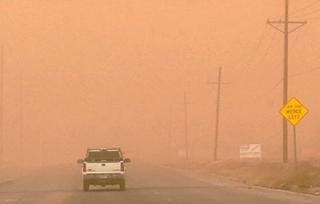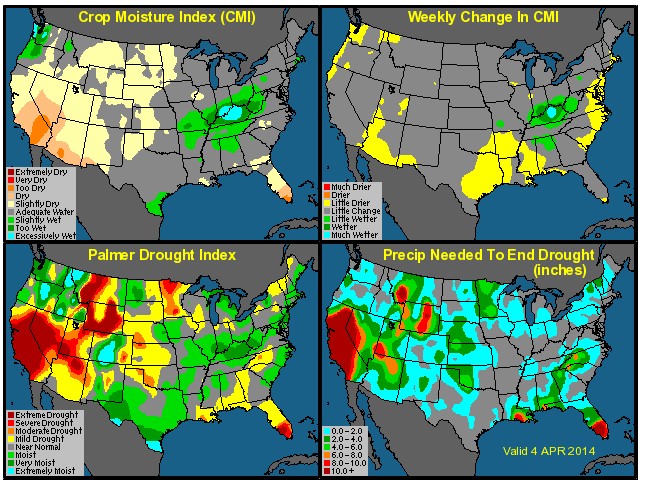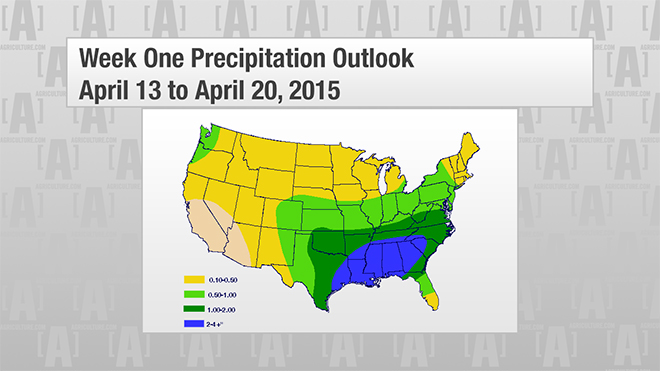Wheat futures told the story best early Monday morning: An 11-cent drop in the nearby futures contract in overnight trading was a surefire sign that it rained in the Plains . . . or that the trade thinks it did.

Rain did fall, but it wasn't as much as forecast in many spots. Widespread amounts of less than .5 inch fell short of projections for more moisture much to the chagrin of frustrated wheat farmers who have watched storm clouds dodge them as the wheat crop screams for more water.
The drought in the Plains, though it pales in comparison to its devastation in the southwestern part of the U.S., has slowly chipped away at crop potential in the region for several years. Though there are so-called garden spots, farmers say they're starting to stare down the barrel of a problem from which it will likely take years to recover.
"I'm sorry, folks, but these 0.2- or 0.3-inch rains are not going to do it. Yes, they might make things hold on, but I think the bloom is off the flower, boys," says northern Kansas farmer and Agriculture.com Marketing Talk adviser elcheapo. "This has been going on for a number of years now in this part of the country. Many places have been running rain-deficient for a number of years now. Also, consider when there is a good 4-inch toad-strangler, it does not go into the soil; a large percentage flows away. It will take a number of years with above-average rainfall to replenish the soil profile . . . and here we go into another growing season dry again."
What exactly will it take to revive the land in the Plains, some of which resembles a nuclear wasteland after years of deficient moisture? Though it's a common refrain for measuring rainfall in places where it's become a rarity, time is not the best gauge for potential moisture accumulation moving ahead, says MDA Weather Services senior ag meteorologist Don Keeney. Just like elcheapo says, it's easy to let your eyes get bigger than your stomach when it comes to rainfall, making it virtually impossible to pin down a specific time frame for overall moisture recharge.

"We can't say that it would take years of above normal to 'get back to normal' or really put a time frame on it because it would depend on how much rain is received over a certain period of time," Keeney says. "Too much in too short a period of time would just run off, but good rains over a number of weeks would certainly do the trick."
Instead, think inches. In general, the central and southern Plains needs anywhere between 2 and 6 inches of rainfall to end drought. A Midwestern corn and soybean farmer might see that amount of rainfall in a few weeks during a normal spring season, but in the Plains, it's a different story.
"The wind blew from the east here three days straight – usually good for a rain. Then the last two days from the south; you needed rocks in your pockets to walk. But nothing," says Marketing Talk contributor crophugger, who farms near Dalhart in the Texas panhandle. "Trace of rain in March, and 0 so far in April."
That may be changing soon, bringing some hope that maybe enough rain will fall to salvage what yield potential there is in the region's winter wheat fields. After Sunday saw showers move through parts of Kansas, for example (dropping in excess of 2 inches of rain in some spots), the trend looks to turn wetter for a considerable swath of the central Plains. Look for another 1 to 2 inches of rain from about central Nebraska and south in the next week and potentially more in the last full week of April, says Dan Hicks, Freese-Notis Weather, Inc., ag meteorologist.

Though the prospect of up to 4 inches of rain in two weeks is very attractive to farmers whose crops are suffering from major dryness, especially since April 1, the current soggy 15-day outlook likely won't quite be enough to remove the word drought from the vernacular on Plains wheat farms for the year.
"I do believe there will be some catching up this week, especially in southern Kansas, Colorado, Oklahoma, and northern Texas. I also believe there will be more catching up in the remaining two weeks of April, as the pattern is generally a wet one there through the next 15 days," Keeney says. "I don’t think this will end the drought, but it will certainly go a long way to improve topsoil moisture and hence wheat conditions."





